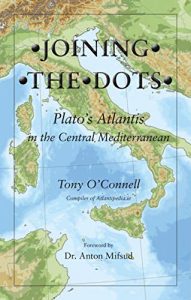Kaulins, Andis
 Andis Kaulins (1946-2022) was born in Latvia. He studied law in the United States and lectured on the subject at a number of universities there. He later taught law at the universities of Kiel and Trier. His real love would seem to be golf as well as the study and interpretation of ancient megaliths(a) together with their inscriptions and carvings. He has authored a book[423] on the subject of ancient megaliths and their astronomical significance. He was also the webmaster of megaliths.net(c), which is extensive but incomplete!
Andis Kaulins (1946-2022) was born in Latvia. He studied law in the United States and lectured on the subject at a number of universities there. He later taught law at the universities of Kiel and Trier. His real love would seem to be golf as well as the study and interpretation of ancient megaliths(a) together with their inscriptions and carvings. He has authored a book[423] on the subject of ancient megaliths and their astronomical significance. He was also the webmaster of megaliths.net(c), which is extensive but incomplete!
>Kaulins was greatly interested in the development of writing and published a paper on the subject(d). Additionally, in 1980 Kaulins also published at least two papers on the decipherment of the Phaistos Disk(e). Kaulins had an interest in a wide range of historical subjects including Egyptology, regarding which he offered some unexpected identifications(f);
“The identity of Tutankhamun can be explained as follows:
In my opinion, the evidence is incontrovertible that King Saul = Echnaton (Akhenaten), King David = Sethos and King Solomon = Ramses II with Shishak = Ramses III.
Accordingly, Tutankhamun can only be ATON, i.e. JON-ATHON (“young Aton, young Adonis, “Jaun-(IE)donis”), one of the sons of Saul in the Bible. Saul was Echn-ATON viz. Akhen-ATEN (“old Aton”, old Adonis, “Vec-(IE)Donis”). The other brother was Semenchkare, Biblical Ish-Boshet, who served a short time as Pharaoh before being executed.”<
Dr Kaulins believed that Atlantis did exist and considered two possible regions for its location; the Minoan island of Thera or some part of the North Sea that was submerged at the end of the last Ice Age when the sea levels rose dramatically. Kaulins noted that part of the North Sea is known locally as ‘Wattenmeer’ or Sea of Mud’ reminiscent of Plato’s description of the region where Atlantis was submerged, after that event. He suggested(b) that the Pillars of Heracles were located on either side of a narrow channel that had once existed between Tunisia and an extended Sicily that had included the Maltese Islands. He also believes that in the Central Mediterranean region, Carthage was possibly built on the remains of Tartessos!
(a) http:///www.lexiline.com (link broken)
(b) Pillars of Heracles – Alternative Location (archive.org)
(c) Megaliths Megalithic Sites Standing Stones Megaliths.Net (archive.org)
(d) (PDF) Ancient Signs: The Alphabet & the Origins of Writing (researchgate.net) *
(f) LEXILINE JOURNAL: Who was Tutankhamun – Jonathon Aton – The Me’il – LexiLine Journal 347 *
